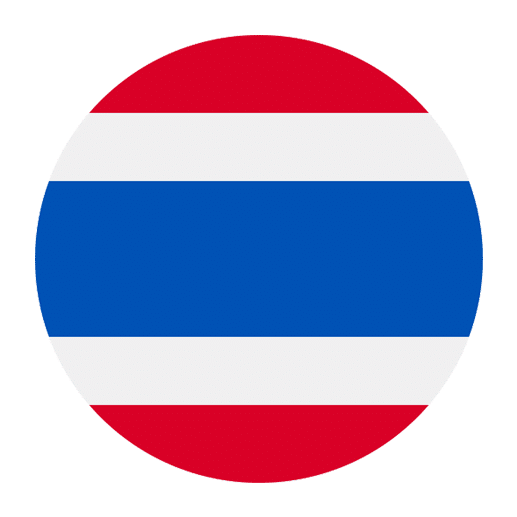The allure of Thai calligraphy is undeniable. With its flowing lines, intricate curves, and profound cultural significance, Thai calligraphy offers not only a visual delight but also a deep connection to Thailand’s rich history and traditions. Whether you’re a language enthusiast, an artist, or simply someone who appreciates beauty, exploring Thai calligraphy can be a rewarding and enriching experience. In this article, we will delve into the world of Thai calligraphy, uncovering its history, techniques, and the best practices for mastering this ancient art.
The Historical Roots of Thai Calligraphy
Thai calligraphy, or “Lai Sue Thai,” has its origins deeply rooted in the history and culture of Thailand. The development of Thai script can be traced back to the 13th century during the Sukhothai period. The script evolved from Old Khmer script, which itself was influenced by Brahmi script from India. This historical lineage imbues Thai calligraphy with a sense of continuity and tradition.
During the Sukhothai period, King Ramkhamhaeng the Great played a pivotal role in the development of the Thai script. He is credited with the creation of the Thai alphabet, which consisted of 44 consonants, 15 vowel symbols that combine into at least 28 vowel forms, and four tone marks. The script was designed to accommodate the tonal nature of the Thai language, which has five distinct tones.
Over the centuries, Thai calligraphy has been used in various contexts, from religious manuscripts and royal decrees to poetry and everyday communication. Each era brought its own stylistic influences, making Thai calligraphy a dynamic and evolving art form.
The Aesthetics of Thai Calligraphy
The beauty of Thai calligraphy lies in its fluidity and elegance. The script’s graceful curves and intricate details reflect the Thai people’s appreciation for harmony and balance. Unlike many Western scripts, Thai calligraphy emphasizes rounded shapes and continuous flow, giving it a unique visual identity.
Key Elements of Thai Calligraphy:
1. **Curves and Loops**: Thai characters often feature rounded shapes and loops, which contribute to the script’s flowing appearance. These curves are not just decorative; they also serve to differentiate similar-looking characters.
2. **Symmetry and Balance**: Thai calligraphy strives for visual harmony. Each character is designed to be balanced and symmetrical, creating a pleasing aesthetic.
3. **Tonal Marks**: The tonal nature of the Thai language is reflected in the script. Tone marks are used to indicate the pitch of a syllable, and their placement is crucial for accurate pronunciation.
4. **Ornamental Flourishes**: In more artistic forms of Thai calligraphy, ornamental flourishes and embellishments are added to enhance the visual appeal. These flourishes can range from simple accents to elaborate decorative patterns.
Tools of the Trade
To practice Thai calligraphy, you’ll need a few essential tools:
1. **Brushes**: Traditional Thai calligraphy is often done with brushes. Different brush sizes and shapes can be used to create various line thicknesses and styles.
2. **Ink**: High-quality ink is essential for achieving the desired intensity and flow. Traditional Thai calligraphy uses ink made from natural materials, but modern calligraphers may use commercially available inks.
3. **Paper**: The choice of paper can significantly impact the final result. Traditional Thai calligraphy is often done on handmade paper, which has a unique texture and absorbency.
4. **Guidelines**: Beginners may find it helpful to use guidelines to ensure consistent spacing and alignment of characters. These can be drawn lightly in pencil and erased after the ink has dried.
Learning the Basics of Thai Calligraphy
Mastering Thai calligraphy requires patience, practice, and a keen eye for detail. Here are some steps to get you started:
1. Familiarize Yourself with the Thai Alphabet
Before you can begin practicing calligraphy, you need to have a solid understanding of the Thai alphabet. Take the time to learn the 44 consonants, 15 vowel symbols, and the four tone marks. Familiarity with the script will make it easier to recognize and replicate the characters.
2. Study Basic Strokes
Thai calligraphy is built upon a foundation of basic strokes. These strokes are the building blocks of each character. Spend time practicing individual strokes, paying attention to their shape, direction, and flow. Some common strokes include:
– **Vertical lines**: Straight lines drawn from top to bottom.
– **Horizontal lines**: Straight lines drawn from left to right.
– **Curves**: Gentle, rounded lines that form the distinctive loops and curves of Thai characters.
– **Diagonals**: Lines drawn at an angle, often used in combination with other strokes.
3. Practice Individual Characters
Once you’re comfortable with basic strokes, start practicing individual characters. Begin with simple characters and gradually work your way up to more complex ones. Focus on achieving consistent proportions and maintaining the fluidity of each stroke. Pay attention to the placement of tone marks, as they are essential for accurate pronunciation.
4. Experiment with Different Styles
Thai calligraphy encompasses a variety of styles, each with its own unique characteristics. Some styles are more formal and structured, while others are more artistic and expressive. Experiment with different styles to find the one that resonates with you. As you gain confidence, you can start incorporating your own creative touches into your calligraphy.
Advanced Techniques and Artistic Expression
As you progress in your Thai calligraphy journey, you can explore more advanced techniques and delve into the realm of artistic expression. Here are some ways to take your calligraphy to the next level:
1. Incorporate Decorative Elements
Thai calligraphy often features decorative elements that enhance the visual appeal of the text. These elements can include intricate borders, floral motifs, and geometric patterns. Experiment with adding these embellishments to your calligraphy to create stunning compositions.
2. Combine Calligraphy with Other Art Forms
Thai calligraphy can be combined with other art forms, such as painting and illustration, to create multi-dimensional works of art. Consider incorporating calligraphy into your paintings or using calligraphic elements to enhance your illustrations. This fusion of art forms can result in truly unique and captivating pieces.
3. Explore Different Mediums
While traditional Thai calligraphy is typically done on paper, don’t be afraid to explore other mediums. Try practicing calligraphy on fabric, wood, or even ceramics. Each medium offers its own challenges and opportunities for creative expression.
4. Study the Masters
To gain inspiration and refine your skills, study the works of master Thai calligraphers. Analyze their techniques, observe their use of line and form, and try to replicate their styles. Learning from the masters can provide valuable insights and help you develop your own unique voice in calligraphy.
The Cultural Significance of Thai Calligraphy
Thai calligraphy is not just an art form; it is a reflection of Thai culture and values. Throughout history, calligraphy has played a vital role in preserving and transmitting knowledge, religious teachings, and cultural heritage. Here are some ways in which Thai calligraphy is intertwined with Thai culture:
1. Religious Manuscripts
Thai calligraphy has a strong connection to Buddhism, the predominant religion in Thailand. Many religious manuscripts, known as “Pali manuscripts,” are written in beautiful calligraphy. These manuscripts contain sacred texts, prayers, and teachings of the Buddha. The act of creating these manuscripts is considered a form of merit-making, and the intricate calligraphy is a testament to the devotion and reverence of the scribe.
2. Royal Decrees and Documents
In the past, Thai calligraphy was used to create royal decrees and official documents. The elegance and precision of the calligraphy conveyed the authority and importance of the content. Today, these historical documents are treasured artifacts that provide insights into Thailand’s history and governance.
3. Poetry and Literature
Thai calligraphy has also been used to transcribe poetry and literature. The beauty of the script enhances the lyrical quality of the text, creating a harmonious blend of visual and literary art. Many traditional Thai poems and literary works are preserved in calligraphic form, allowing future generations to appreciate both the content and the artistry.
4. Festivals and Ceremonies
Thai calligraphy is often featured in festivals and ceremonies. For example, during the Loy Krathong festival, people create intricate calligraphic designs on floating lanterns. These lanterns are then released into the water as a symbol of letting go of negative emotions and making wishes for the future. Calligraphy is also used in wedding invitations, temple decorations, and other celebratory events.
Preserving and Promoting Thai Calligraphy
In an age of digital communication, the art of calligraphy faces the risk of being overshadowed by modern technology. However, efforts are being made to preserve and promote Thai calligraphy for future generations.
1. Educational Programs
Many schools and cultural institutions in Thailand offer calligraphy classes and workshops. These programs aim to teach young people the skills and techniques of Thai calligraphy, ensuring that the tradition is passed down to the next generation. By integrating calligraphy into the education system, students gain an appreciation for their cultural heritage and develop a sense of pride in their artistic abilities.
2. Calligraphy Competitions
Calligraphy competitions are held at various levels, from local to national, to encourage and showcase talent. These competitions provide a platform for calligraphers to demonstrate their skills and gain recognition for their work. They also foster a sense of community among calligraphy enthusiasts and promote the exchange of ideas and techniques.
3. Digital Preservation
In the digital age, efforts are being made to preserve calligraphic works through digitization. High-resolution images of historical manuscripts and contemporary calligraphy are being archived and made accessible online. This digital preservation ensures that calligraphic treasures are not lost to time and can be studied and appreciated by a global audience.
4. Public Exhibitions
Museums, galleries, and cultural centers often host exhibitions of Thai calligraphy. These exhibitions provide an opportunity for the public to view and appreciate the beauty of calligraphic works. They also educate visitors about the history, techniques, and cultural significance of Thai calligraphy.
Conclusion
Unlocking the beauty of Thai calligraphy is a journey that combines artistic expression, cultural appreciation, and personal growth. By learning the history, techniques, and cultural significance of this ancient art form, you can develop a deeper connection to Thai culture and enhance your own creative abilities. Whether you are a beginner or an experienced calligrapher, the practice of Thai calligraphy offers endless opportunities for exploration and discovery. So pick up your brush, dip it in ink, and let the graceful lines of Thai calligraphy guide you on a path of artistic fulfillment and cultural enrichment.

